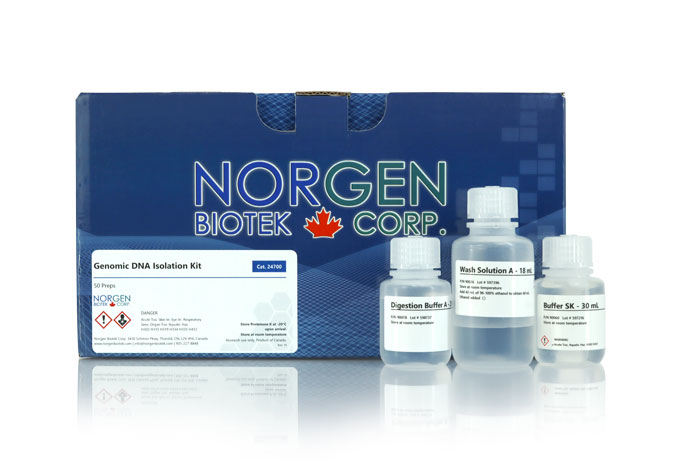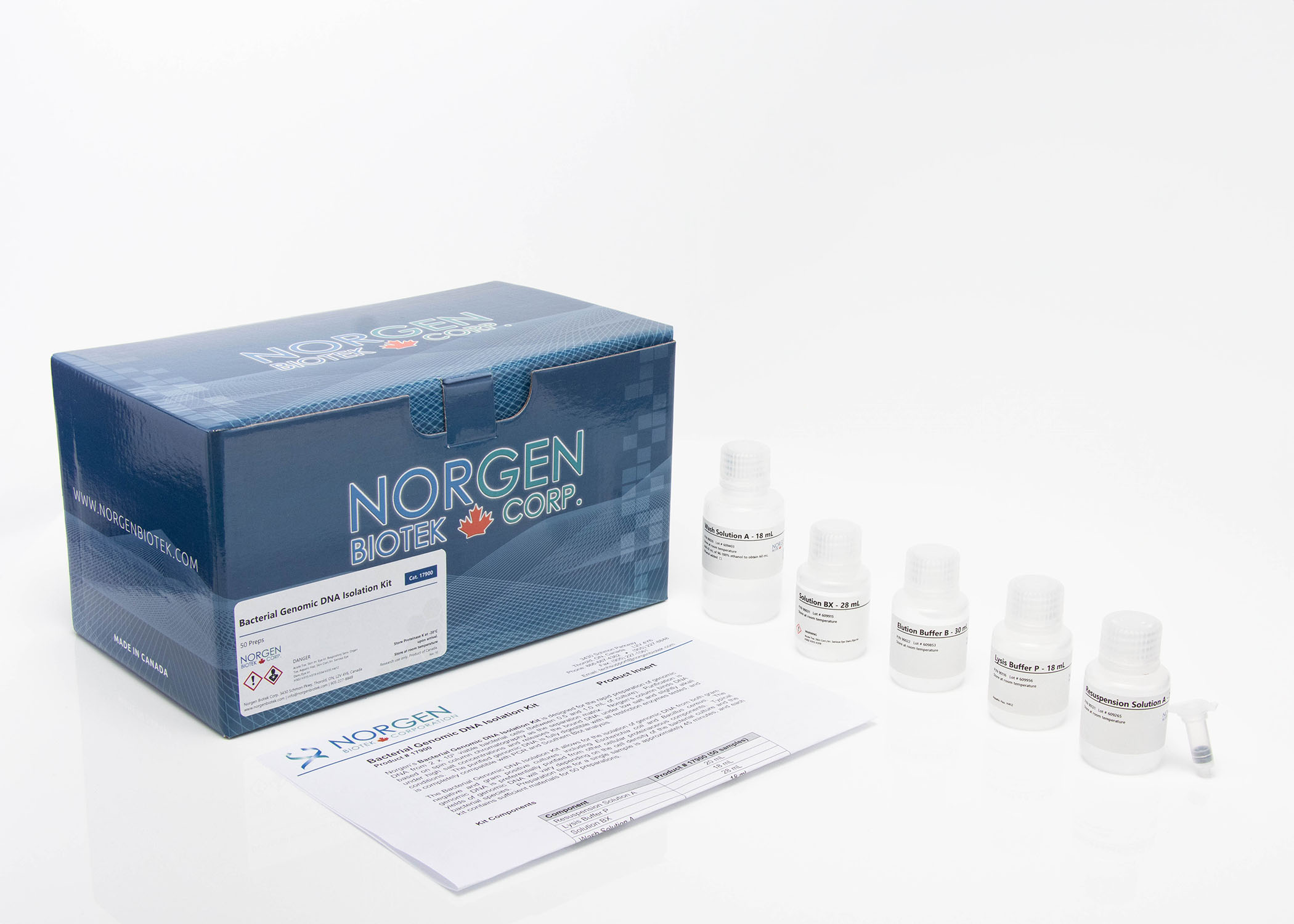Sputum DNA Isolation Kit
For the rapid purification of high quality DNA from sputum samples
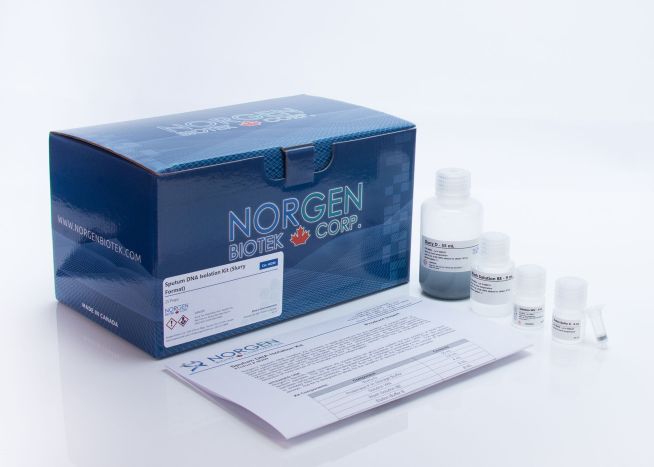
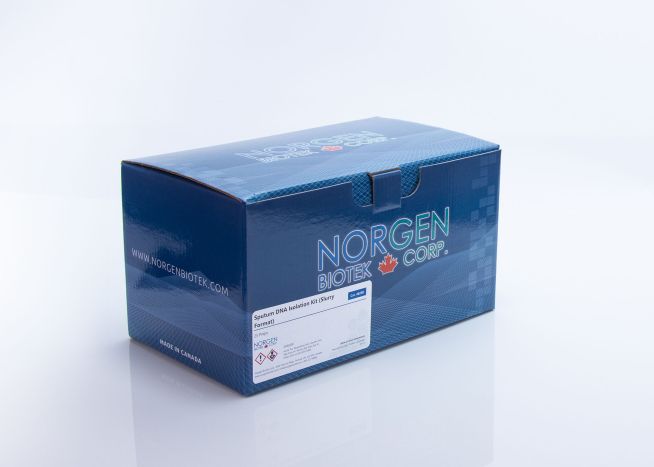
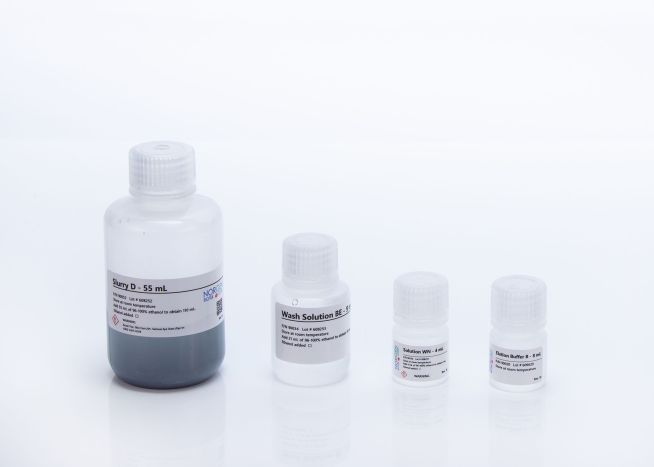
For research use only and NOT intended for in vitro diagnostics.
Sputum DNA Isolation Kit
For the rapid purification of high quality DNA from sputum samples
Register today to receive an exclusive 15% off* on your first order.
Features and Benefits
- DNA can be isolated and detected from as little as 100 µL of sputum
- Effective removal of PCR inhibitors
- Compatible with Norgen’s Saliva Collection and Preservation Device (Cat. RU49000)
- Sputum Liquification Buffer (Cat. 28289) can be purchased separately
This kit constitutes an all-in-one system for the rapid isolation of DNA from sputum samples. It allows for the isolation of bacterial or eukaryotic DNA from the sputum samples using spin-column chromatography based on Norgen’s proprietary resin. The kit includes all the reagents needed to process sputum DNA. The protocol can be completed in 30 minutes. Purified DNA is of the highest quality and free from inhibitors, and can be used in sensitive downstream applications including PCR and qPCR.
Background
A sputum specimen is the name given to the mucus which is expectorated from the lower airways. High quality sputum samples should contain very little saliva, as this may contaminate the sputum sample with oral bacteria. Sputum samples are typically evaluated to look for infections such as Moraxella catarrhalis, Mycobacterium tuberculosis, Streptococcus pneumoniae ;and Haemophilus influenza. Other pathogens can be detected in sputum as well, including HIV. In addition, sputum samples are useful in the detection of lung cancer or to evaluate chronic inflammation.
Details
Supporting Data
Figure 1. Consistent Isolation of Sputum DNA. Sputum samples were collected from 16 donors using the collection devices from Norgen's Sputum DNA Collection, Preservation and Isolation Kit (Cat. RU46100), and the DNA was subsequently isolated using Norgen's Sputum DNA Isolation Kit. Ten µL of the purified DNA from each sample was then run on a 1X TAE, 1% agarose gel for visual analyses. DNA was successfully isolated from all 16 of the samples and was of a high integrity. It is important to note that the yield of DNA in a typical sputum sample will vary greatly and is highly dependent on the health status of the donor. The DNA yields obtained using Norgen's kit were equal to or exceeding those of what is stated in the literature.
Figure 2. High Yield of Sputum DNA. Sixteen sputum samples were collected using Norgen's Sputum DNA Collection, Preservation and Isolation Kit (Cat. RU46100) and stored at room temperature for 1 day. DNA was subsequently purified using Norgen's Sputum DNA Isolation Kit, and the DNA yield was determined using the NanoVue Plus (GE Healthcare). The total average sputum DNA yield from 1.0 mL of preserved sputum of the 16 samples processed using Norgen's kit was 75.25 µg (indicated by the red line in the graph). Again it is important to stress that the yield of DNA obtained from each sample will vary from donor to donor as it relies heavily on the health status of the donor at the time the sample was taken.
Figure 3. High Quality of Sputum DNA. Sixteen different sputum samples were collected using Norgen's Sputum DNA Collection, Preservation and Isolation Kit (Cat. RU46100) and stored at room temperature for 1 day. DNA was subsequently purified using Norgen's Sputum DNA Isolation Kit, and the DNA yield was determined using a NanoVue Plus (GE Healthcare). The average A260nm:A280nm ratio (indicated by red line in graph) obtained for each of the samples using Norgen's kit was 2.05 indicating the DNA is of vary high quality.
|
Kit Specifications
|
|
|
Time to Complete DNA Isolation
|
< 1 hour
|
|
Average Yield of DNA from 1.0 mL*
|
75 μg
|
|
Average Purity (OD260/280)
|
1.8 - 2.1
|
* Average DNA yield will vary depending on the health status of the donor
Storage Conditions and Product Stability
All solutions should be kept tightly sealed and stored at room temperature. This kit is stable for 2 years after the date of shipment.
Norgen’s Sputum DNA Isolation Kit contains ready-to-use Proteinase K, which is dissolved in a specially prepared storage buffer. The buffered Proteinase K is stable for up to 2 years after the date of shipment when stored at room temperature.
| Component | Cat. 46200 (25 preps) |
|---|---|
| Slurry D | 55 mL |
| Proteinase K in Storage Buffer | 0.6 mL |
| Solution WN | 4 mL |
| Wash Solution BE | 9 mL |
| Elution Buffer B | 8 mL |
| Mini Filter Spin Columns | 25 |
| Collection Tubes | 25 |
| Elution Tubes (1.7 mL) | 25 |
| Product Insert | 1 |
Documentation
FAQs
Slurry
Sputum should be collected into a sterile sputum collection cup, vial or tube.
Simply remix and centrifuge again. After centrifuging, decant the supernatant to a fresh tube.
Adding less volume may reduce DNA yields. Adding more may not affect the DNA yields except when performing the DNA elution step. Eluting DNA in higher volumes of elution buffer will result in diluting your DNA.
Yes, a second elution can be performed using a smaller volume of elution buffer B (50 µL). Please perform second elution in a new elution tube and ensure the concentrations before combining the elutions. Combining elutions can dilute the first elution if the second elution's concentration is too low.
Some sputum samples contain very little DNA. This will vary from individual to individual based on a number of variables. In order to increase the DNA yield it may be necessary to isolate DNA from a larger volume of sputum sample or isolate from several samples and then pool the DNA eluted from the two samples.
If a different elution buffer was used from the one provided in the kit, the buffer should be checked for components that may interfere with the application. Common components known to interfere with downstream assays include high salts, EDTA, detergents and other denaturants. Check the compatibility of the elution buffer with the intended use.
Let the elution stand vertically for 10 minutes to precipitate the resin and then use the clear elution supernatant for downstream applications. (Alternatively, centrifuge at low speed (200 x g for 1 minute.) This will neither decrease the DNA yield nor interfere with any downstream application.
Citations
| Title | Antibiotic resistance, bacterial transmission and improved prediction of bacterial infection in patients with antibody deficiency |
| Citation | JAC-Antimicrobial Resistance 2023. |
| Authors | Sylvia Rofael, Clara Leboreiro Babe, Mehmet Davrandi, Alexandra L Kondratiuk, Leanne Cleaver, Naseem Ahmed, Claire Atkinson, Timothy McHugh, David M Lowe |
| Title | Digital PCR to Detect and Quantify Heteroresistance in Drug Resistant Mycobacterium tuberculosis |
| Citation | PLoS One 2013. |
| Authors | Suporn Pholwat, Suzanne Stroup, Suporn Foongladda, Eric Houpt |



